
The Pinoy Travel Bloggers (PTB) Blog Carnival for June 2011 honors Dr. Jose Rizal on his 150th Birth Anniversary. Rizal was the quintessential traveler of his time. So for the month of June 2011, PTB bloggers wrote about Rizal and Travel. Topics range from Rizal's travels and discussions about Rizal as a traveler, countries or specific cities Rizal visited, and the Rizal Passport and Heritage Trail, among many other topics.
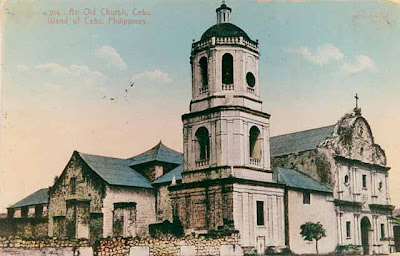
Estan Cabigas of Langyaw does some archival research and talks about Rizal's visit to Cebu in La entrada de Cebu es Hermosa… (Rizal, 1896). He writes, "Not too many Filipinos know it but the Philippine National Hero, Dr. Jose P. Rizal visited Cebu overnight during his sentimental journey, his last, from his four year exile in Dapitan to Manila in 1896." Estan adds, "The trip was his last. Instead of heading to Cuba, as what Governor General Blanco approved, he never left the Philippines and was sentenced to die by gunfire a few months later."
Fung Yu of Virtual Journals does his usual magic with 360-degree VRs of the Rizal Shrines in Fort Santiago, Calamba and Dapitan in Virtually Yours, Rizal. He writes, "This article uses virtual reality technology to provide an immersive experience." Fung adds, "VRs taken from November 2008 to April 2009 with the assistance and support of National Historical Commission of the Philippines."
Graciel Cecilio of Pinay of the move gives her take on Rizal as a traveler in Jose Rizal: The New Travel Hero. She writes, "As it turns out Rizal may have been the first Filipino to travel and explore the world.I could not help but draw parallels between his travels and how we now travel in this century. I believe that Rizal would proudly hold his own among the international traveling elite."
Lilliane Cobiao of Wanderlass writes about her trip to Dapitan City and her visit to the Rizal Shrine. She writes, "Any Filipino school kid will be able to tell you that Dapitan City is where our national hero, Dr. Jose Rizal was exiled during the Spanish era from 1892-1896. But where is it in the Philippines? And what’s in Dapitan?"
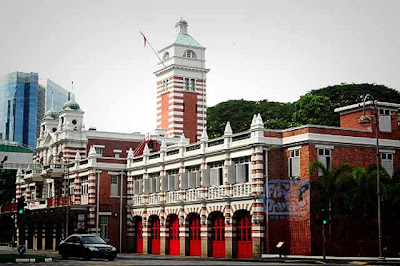
Ron Cruz of Flip'n Travels retraces the visit of Rizal to Singapore en route to Europe in la escala en singapur. He writes, "OK, Since I am in Singapore (The first foreign country he set foot), I decided to revisit his translated diary–”Enroute to Barcelona“, and to try recreating his itinerary during his stopover in the city."
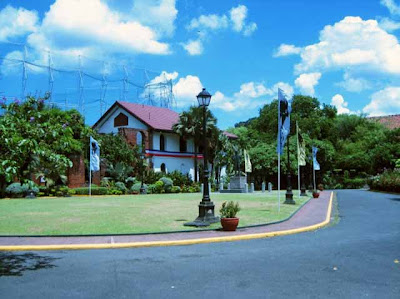
Tita Lili of lifeisacelebration writes about Fort Santiago and Rizal as a poet in Say Hello to 'Mi Ultimo Adios' as she tours some foreign visitors around sites related to our national hero.
Mhe-anne Ojeda of My Coming and Goings talks about the Rizal Passport in Blazing Jose Rizal At 150 Heritage Trail: My First Few Steps. She writes, "Blazing Jose Rizal @ 150 Heritage Trail is a historical adventure worth taking! I see it as an opportunity to experience the history, scenery, and the satisfaction of being able to learn more about our national hero Dr. Jose Rizal and meet new people along the way!"
Kara Santos of Travel Up talks about Rizal monuments in Daet and Jolo in Revisiting Rizal Monuments in the North and South. She writes, "To commemorate the 150th birthday of National Hero Jose Rizal on June 20, 2011, the Philippine Center for Photojournalism (PCP) contributed to a photo project of Interaksyon.com, TV-5′s website... Having visited Camarines Norte earlier this year, I volunteered a photo of the Rizal monument in Daet, which is the oldest in the country."
Edelito Sangco of Island Vacations talks in detail about the historical sites in Dapitan, Zamboanga del Norte in Heritage Tours – My Travel To Rizal Shrine In Dapitan City, Mindanao Island, Philippines. He writes, "My life has been greatly influenced by the life, works and writings of Dr. Jose P. Rizal, the national hero of the Philippines... When I was still a child, I dreamed of joining in heritage tours and visit the places prominently mentioned in the diaries of Rizal."
Ivan Briñas Cultura of Batang Lakwatsero talks about Rizal's last steps from Fort Santiago to Luneta through poetry in Lakbay Jose Rizal @ 150 | Huling Yapak Tungo sa Kalayaan.

Izah Morales of Trip@dora contributes Lakbay Aral: Retracing Rizal's footsteps, where she recount her P.I. 100 field trip to Rizal-related sites in Laguna and Batangas. She writes, "Photographing the siblings’ tombs, playing music at an old piano owned by a lost love, and reminiscing his childhood memories in his hometown… These were how I retraced the footsteps of my Kababayan, Jose Rizal, the Philippines’ National Hero."
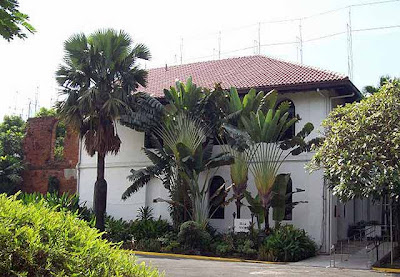
Chin Chan of Juanderfulpinoy gives his views about Rizal in Dr. Jose Rizal, Nationalist, Advocate, Hero and a Nomad. He writes, "I always believe in the ideologies of Dr. Jose Rizal. Philippine National Hero , a Nationalist , advocate for great reforms in the Philippines during spanish era. Rizal was able to put his principles into his writings. A genuine idealist but not blinded by idealism."
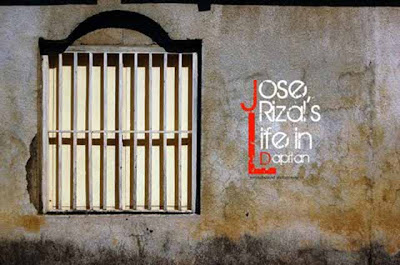
Jerome Baluyut of Balintataw talks about his visit to Dapitan in Life in Dapitan. he writes, "Back in 2009, I went on a backpacking trip across Mindanao and was fortunate to visit Dapitan as part of our itinerary. Dapitan was the place where Jose Rizal spend his life in exhile. I have an image in my head on how or what to expect once we reach the town, suffering maybe a word to describe it but I was wrong, upon entering the gates, I thought there is 'Life in Dapitan' after all."
Brenna Bustamante of Philippine Travelogue shares the Rizal Passport and sites she visited following the Rizal Heritage Trail in Jose Rizal: The Beginning Of My Journey Along His Journey. She writes, "And today, as I got my Rizal passport, it’ll be the start of my lifelong journey to discovery, history, patriotism and honor of my country’s blessed National Hero and his undying journey that has greatly affected so many people – even up to today."
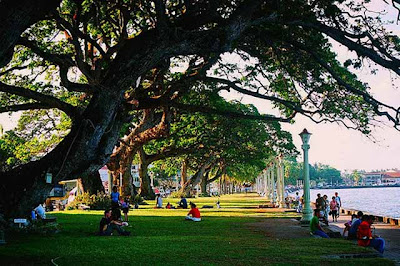
Rv Escatron of Living in a Backpack discusses Rizal's stopover in Dumaguete in Calamba Joe's Saturday in Dumaguete (Jose Rizal's transit in Negros Island). He writes, "It's difficult to trace the steps of Philippine National Hero Jose P. Rizal in Dumaguete City where he was said to have a layover on his way to Manila. The clues leading to this and that places aren't strewn everywhere, save for a historical marker tucked across a Mexican restaurant along Rizal Boulevard and one entry in the hero's journal."

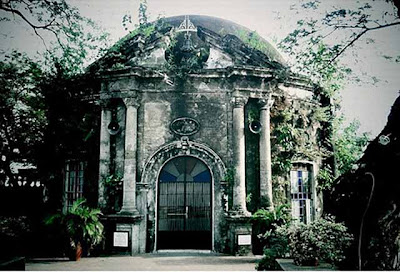
Karla Vanessa Redor of Pinoytravelr Blog gives us Celebrating 150 years of Rizal through Traveling, where she shares photos of sites in the Rizal Heritage Trail that she's already visited. She writes, "Here in PinoyTravelr, we’re celebrating 150 years of Rizal by listing here the sites we have recently visited that are included in the Rizal at 150 Heritage Trail."
Aleah Phils of Solitary Wanderer talks about the Rizalistas of Mt. Banahaw in The Worship of a Divine Jose Rizal in Mt. Banahaw. She writes, "For most Filipinos, Dr. Jose Rizal is not only the Philippines’ national hero, he is also a medical doctor, a novelist, a poet, a linguist, a revolutionary, and a martyr. However, for a group of people in the mystical mountain of Banahaw in Quezon Province, Rizal is not only all of these things, he is a divine being as well."
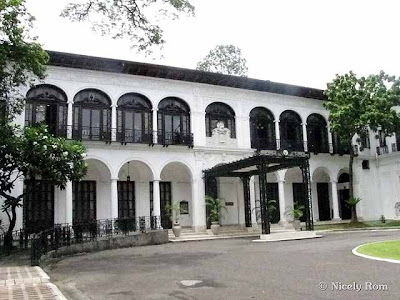
Nicely Rom of Traveling Nicely contributes Revisiting Dr. Jose Rizal at the Malacañang Museum, notes about the Rizal collection at the Malacañang Museum. She writes, "While other Pinoy Travel Bloggers went outdoor to revisit the places where our national hero, Dr. Jose Rizal traveled, I went to a place close to my heart, literally—because it is close to my workplace—and had my solo tour at the Malacañang Museum: alone with the memoirs of Lolo Jose."
Ca de Ramos of Adventurous Feet contributes "Tatak Rizal" - Celebrating Jose Rizal at 150th Birth Anniversary, as she reflects on her college lessons on Rizal. She writes, "I can still remember my college days, when we had our three-unit subject called "Rizal". I maybe an engineering student way back, but this subject is being required for us to pass, my professor was really strict with this subject."
The Lost Boy Lloyd recounts his visits to Rizal-related sites in Journeying through Jose Rizal’s Life, Exile, and Death. He writes, "I was fortunate enough to have visited sites that are of primary importance to Dr. Jose P. Rizal this year, which is also his sesquicentennial birth anniversary. I have also included excerpts from the authoritative collection of essays by Ambeth R. Ocampo, Rizal without the Overcoat."

I've actually written several posts on historic sites related to Jose Rizal. One of my favorites is Dapitan and the Rizal Shrine, where I feature the Rizal sites in Dapitan. My trip to Dapitan was actually an inspiration to push for the Rizal Passport.

Then there's Save the historic Albert House in Biñan, Laguna, an appeal to preserve probably the last surviving original Rizal house in the country. I'm quite impressed with locals of Biñan who have been very vigilant in protecting the house from transfer to another place where it's significance will be diminished.
 Note: The PTB Blog Carnival is a monthly collection of posts from Pinoy Travel Bloggers on a certain topic or theme. It's a great way for travel bloggers to share their experiences and insights about the aspects of traveling in the country and around the world. This month, PTB chose Rizal and Travel to honor our national hero on his 150th birth anniversary.
Note: The PTB Blog Carnival is a monthly collection of posts from Pinoy Travel Bloggers on a certain topic or theme. It's a great way for travel bloggers to share their experiences and insights about the aspects of traveling in the country and around the world. This month, PTB chose Rizal and Travel to honor our national hero on his 150th birth anniversary.


































